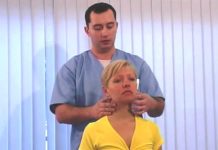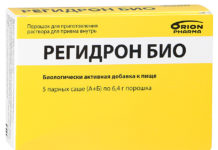Large celandine is a medicinal plant widely distributed in Europe and Central Asia. It has several names that characterize its properties. Poetic ancient Greeks called it chelidonium (Chelidonium) - dovet grass, since the vegetation period of the plant is associated with the arrival and departure of these birds. Medicinal properties and contraindications, celandine recipes were given not only in medical treatises and herbalists, but also in collections of witchcraft potions. Therefore, another name for celandine is witch grass.
Material Content:
- 1 What are the beneficial properties of celandine?
- 2 Indications for use
- 3 What diseases does it cure?
- 4 Celandine tincture on vodka - instructions for use
- 5 Traditional medicine recipes
- 6 Useful properties of celandine for beauty, in cooking
- 7 Contraindications to the use of herbs
- 8 Side effect and overdose
What are the beneficial properties of celandine?
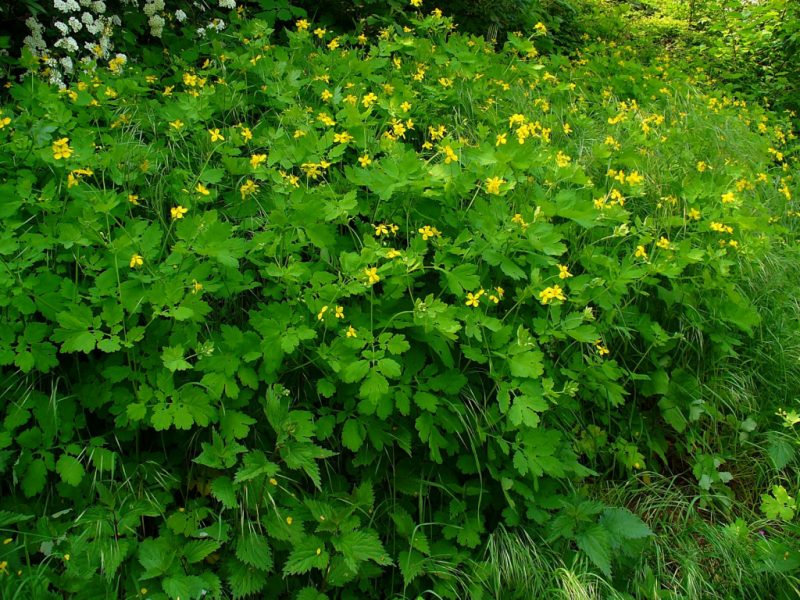
Witches are called herbs containing substances with hallucinogenic or psychotropic properties. The alkaloid chelidonin has properties similar to morphine and papaverine. It calms and has an analgesic effect.
The healing properties of celandine are mainly due to the activity of alkaloids:
| Alkaloid Name | Amount (in%) | Effect |
|---|---|---|
| Helidonin | 63 | calms the central nervous system, can lead to paralysis |
| Protopin | 20 | causes uterine muscle hypertonicity |
| Allocryptopin | 10,5 | - |
| Homochelidonin | 2 | strong local anesthesia. It has no use in medicine, as it is a convulsive poison |
| Sanguinarine | 2 | short-term CNS depression followed by excitation |
| Heleritrin | 2 | local irritant |
| Helirubin | 2 | - |
| Helilyutin | 2 | - |
| Corizamine | 1 | - |
| Berberine | 1 | - |
| Koptizin | 1 | - |
| Stylopin | 0,1 | - |
| Chelamine | 0,2 | - |
| Helamidine | 0,3 | - |
The composition of the alkaloids of celandine was examined by Czech scientists. Studying the pharmacological action of the complex of plant substances at the beginning of the 20th century, a prominent pharmacologist, MD, Stanislav Iosifovich Chirvinsky. He established the locally irritating effect of an aqueous extract of celandine on the skin. When the extract is injected under the skin, severe pain occurs, and with an intravenous injection, the pulse slows down, blood pressure decreases, breathing quickens and deepens.
Of interest is another study by S.I. Chirvinsky. The scientist exposed a 5% solution of the extract to cancer cells.
Under the microscope, he noticed marked changes - the cell membrane was compacted, the nucleus decreased in size, “grains” formed in the cytoplasm, after which it became cloudy and the cell died.
The properties of individual alkaloids were also studied. The research results are shown in the table above. Many of them have not been studied, since the composition of the milky juice of such compounds includes about 20 species.
The properties of the sanguine ritrin complex are most studied.
It was revealed that it exhibits a pronounced anticholinesterase effect - it stimulates the transmission of nerve impulses:
- enhances the contraction of smooth muscles (bronchi, uterus, bile and urinary tract, gastrointestinal tract, eyes);
- increases secretory function of sweat and digestive glands;
- stimulates autonomic NS;
- helps to increase the tone of parasympathetic and sympathetic NS;
- activates skeletal muscle contraction.
Sanguirythrin has a pronounced bactericidal effect on gram-positive and gram-negative bacteria, yeast and yeast-like fungi, Trichomonas.
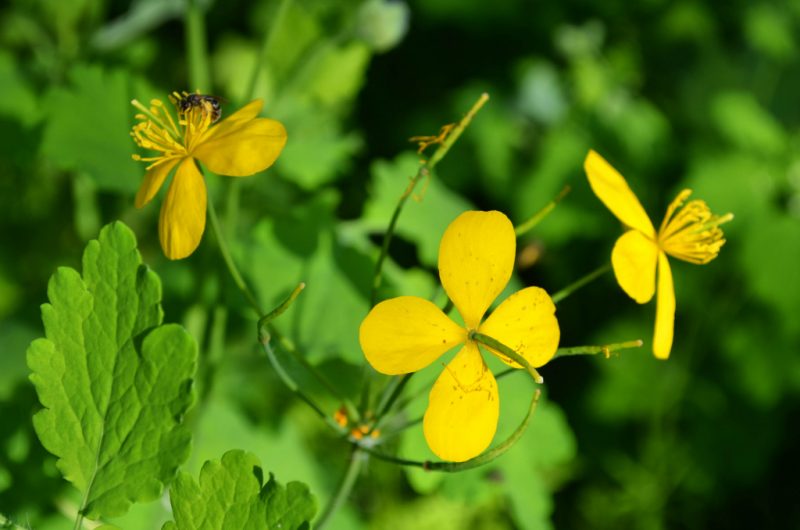
Saratov scientists in 2008-2009 found that the alkaloids of celandine extract are “embedded” in the DNA double helix of pathogenic microorganisms, changing its structure. The damaging effect of this plant is especially valuable in relation to the genetic material of microbes resistant to major antibiotics.
Research conducted at the Institute of Neurosurgery. Academician A.P. Romodanova (Ukraine, Kiev) in 2010 showed a positive effect of Amitozin (a remedy based on celandine alkaloids) on tumor cells.
The drugs exhibit a wide range of antitumor effects and immunomodulating effect in clinical oncology.
Studies have confirmed the antitumor effect of celandine preparations on malignant neoplasms:
- breast and pancreas;
- lungs;
- lymph nodes;
- skin
- ovaries;
- brain.
The active substances of this nondescript plant exert a cytotoxic effect on tumor cells with:
- sarcoma;
- lymphoblastoma;
- carcinoma;
- glioma and other types of cancer.
For the first time, celandine extract in the treatment of skin cancer was used in 1896 by Nikolai Nikiforovich Denisenko.
In addition to the substances considered, the plant contains:
- ethers;
- vitamin complexes;
- some flavonoids;
- coumarins;
- acids;
- carotenoids.
Celandine seeds, in addition to a significant amount (40-60%) of fatty oil, contain lipase, an enzyme that helps to dissolve, break down and dispose of fats. All substances are bioactive and have long attracted the attention of researchers.
Indications for use
The beneficial properties of celandine are used in official and traditional medicine. Indications for its use are extensive and apply to all organs and systems of the body.
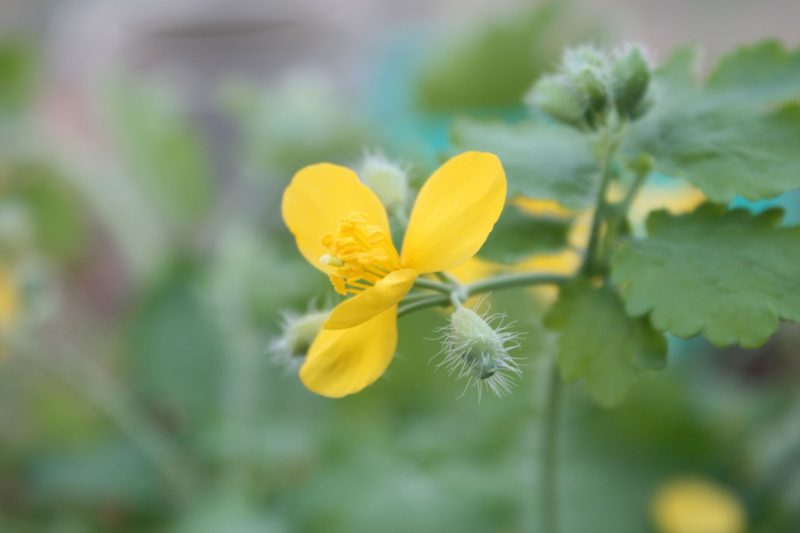
As part of the fees, celandine is indicated to stimulate hematopoiesis, remove toxins, toxins, calculi. The juice solution has found application in cleansing the liver and enhancing metabolic processes.
Doctor of Medical Sciences, Ukrainian scientist Tomilin S. A. in the middle of the 20th century recommended celandine for angina pectoris, hypertension, and pathologies of the liver, biliary tract, kidneys, and joints.
Widespread use of this medicinal plant in ophthalmology. So, celandine juice:
- cures cataracts;
- indicated for detachment of the retina and hemorrhage in it;
- contributes to increased visual acuity;
- relieves eye fatigue.
Apply dovet grass in dentistry with:
- periodontal disease;
- stomatitis (including herpetic).
Celandine-based products are indicated in therapy:
- poliomyelitis;
- cerebral palsy;
- Alzheimer's disease.
Plant oil is used for toothache, stomach pain, hemorrhoids, trigeminal inflammation, malignant diseases and other pathologies accompanied by severe pain.
A decoction of celandine herb is used to gargle with angina, papillomatosis, whooping cough, diphtheria. Douching with broth is recommended for colon polyps, cervical erosion, ovarian cancer.
Outwardly, celandine juice is used in therapy:
- papillomas;
- herpes simplex;
- warts;
- eczema
- itchy dermatoses;
- depriving;
- lupus erythematosus.
In some European countries, celandine is prescribed for painful periods and as an anthelmintic, and when mixed with extracts of other plants, they are used for dropsy and fever. Kvass Bolotova on celandine is recommended to drink with pulmonary tuberculosis and diabetes.
What diseases does it cure?
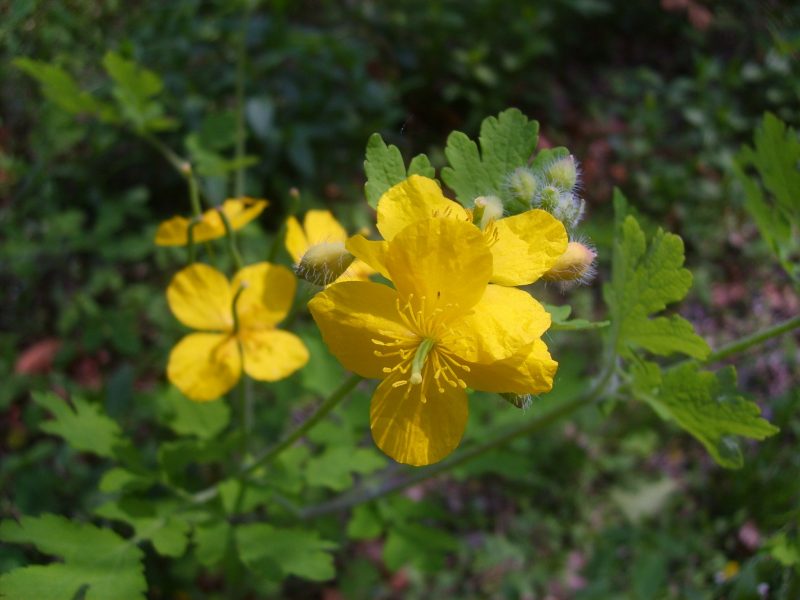
Among the pathologies in which the swallow grass is appropriate, there are:
- diseases of the liver and bile (hepatitis, biliary dyskinesia, cholecystitis);
- inflammation of the hemorrhoids;
- gout;
- laryngeal papillomatosis;
- dermatological problems (warts, psoriasis, scabies, tuberculosis of the skin, ulcers of various etiologies, mechanical damage to the epidermis, etc.);
- periodontal disease;
- neurodermatitis;
- colpitis;
- myoma;
- cervical erosion;
- endocervicitis.
The list of diseases indicated for celandine therapy continues to expand.
Celandine tincture on vodka - instructions for use
Vodka tincture is prepared from dry raw materials or fresh, collected during the period of active flowering.

There are 2 methods of preparation:
- The raw materials are finely chopped into pieces up to 2 cm in size, placed in a dark glass container 2 fingers below the neck and filled with decent vodka to the top. Stand in the dark for at least three weeks. After the expiration, tincture is filtered. The raw materials are squeezed, and the resulting amount of tincture is added with vodka in the amount of ½ of the finished product.
- In the second case, leaves and flowers are torn off of a fresh flowering plant, ground in a mortar to a state of gruel. The resulting mass is drowned in vodka in a ratio of one to two and insisted without access to light for a couple of weeks. The finished product needs to be filtered.
Take tincture in the treatment of malignant diseases, ulcers, colitis, enteritis and biliary pathologies.
Inside, a preparation prepared according to the first recipe is used with caution, because it contains cytotoxic substances and irritates tissues.
With cancer, tincture is drunk according to the scheme:
- 1st day - drop by drop on two tablespoons of water three times during the day immediately before meals;
- 2nd day - 2 drops;
- 3rd day - 3 drops.
The treatment should be continued for two weeks, bringing the number of drops to 14, and water to 100 ml. If there is no discomfort and side effects, the drug is allowed to take 20 drops. After that, the reception is continued, reducing the amount in the reverse order. Bringing the amount of tincture to 1 drop, it is necessary to withstand a 2-week timeout. If necessary, repeat the course.
There are other options for using vodka tincture. For example, you can drip 10 drops of a product into a glass of water and take it before meals (approximately half an hour). Use thrice during the day. Use such a volume for 7 days, then withstand a week-long break and, if there are no side effects, increase the indicated amount of tincture by drop daily. Thus, a single dose is brought to two dozen drops and is taken for 10 days. The therapeutic course is followed by a five-day timeout.
Enter the tincture carefully, assessing the state of health.Exactly observe the scheme and dosage so as not to cause allergies or poisoning.
Traditional medicine recipes
Doctor of Medical Sciences, surgeon and professor A. M. Aminev in 66 of the last century with the help of a folk prescription successfully treated a variety of forms of colon polyps.
A decoction of polyps
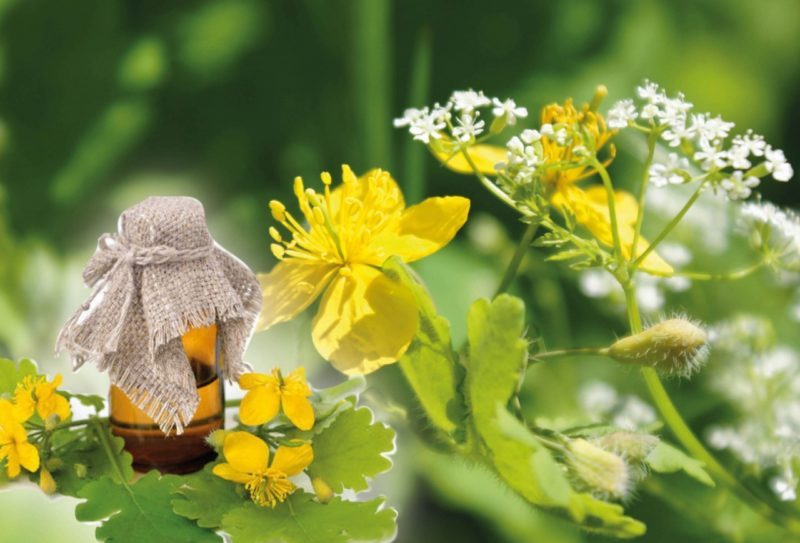
To prepare the broth took:
- 1 part of the leaves of the plant;
- 10 parts of water.
The grass was crushed, poured with water, boiled and languished for a few more minutes. The broth was filtered and used as enemas, after putting the cleansing. The therapy was continued with 6-10 procedures. Such a set of measures was carried out during the flowering season of the plant, and the entire treatment took up to 3 years. However, it was noted that after 2 weeks the intestines were cleansed of polyps.
Ointment for skin and joint diseases
From warts, eczema, skin tuberculosis, gout, radiculitis, osteoporosis and rheumatism, celandine ointment is used.
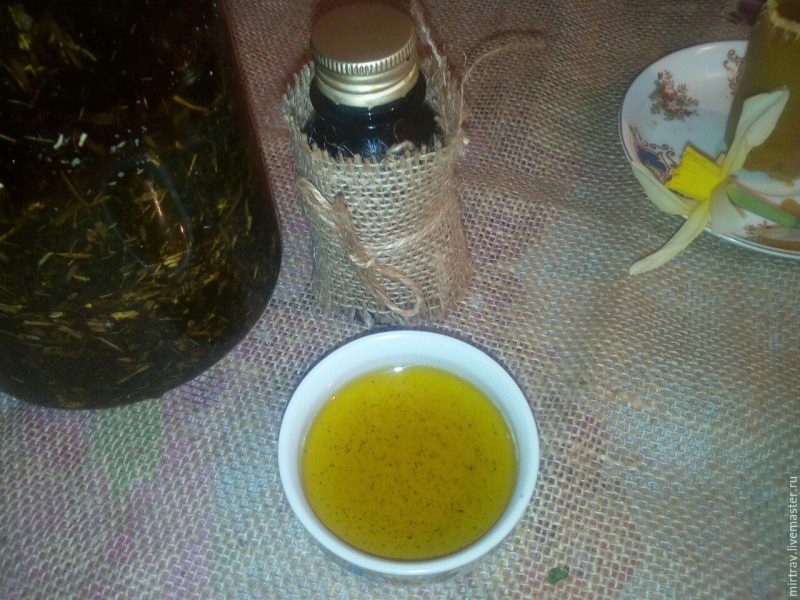
To prepare it take:
- 100 g of dry grass powder or 100 g of fresh plant juice;
- 400 g of petroleum jelly.
Mix the components thoroughly. Store in a cool place in an opaque glass container. Treat damaged areas three times a day.
Fermentation of plant preparations increases their effectiveness, reduces toxicity and provokes an increase in antioxidant and immunomodulating properties. German scientists from the homeopathic company WALA Heilmittel GmbH have developed 15 methods for preparing homeopathic matrix tinctures. Including celandine.
Homeopathic tincture matrix fermented

Prepare a tincture based on water infusion of celandine. Take:
- 1 tbsp. l dried grass;
- two glasses of boiling water.
Raw materials are brewed and insisted in a closed container for 4 hours. Filter the cold infusion and add to it for every 100 ml:
- 0.75 g of honey;
- 0.75 g of lactose;
- two tablespoons of water.
The second option:
For every 100 ml of the drug is administered:
- 75 ml of water;
- 50 ml freshly prepared whey.
The components are mixed and kept warm for up to 4 days, shaking the vessel twice a day. After a predetermined time, the liquid is filtered, the raw materials are squeezed and dried in air. Half of the obtained raw material is burned in a metal container. The components are mixed at the rate of 0.05 g of ash per 100 ml of infusion. They put in a cool (12-15 ° C) place and insist on 6 months without access to light. Filter through a natural cloth.
Such a fermented infusion is rich in bioactive substances. Accepted in 30-60 minutes. before meals, 10-15 drops 5-6 times a day in the treatment of cancer, pulmonary tuberculosis, gastrointestinal tract pathologies.
Useful properties of celandine for beauty, in cooking
There are a large number of beauty recipes based on juice and alcohol tincture of celandine. Juvenile warts, basal cell carcinoma, nevi, myeloma and other skin neoplasms are successfully cured with the help of the Antineoderm SA phytomase at the Nadezhda Chistotel medical center in Lviv. Chinese healers argue that eating one leaf of a plant daily, you can stay forever young.
Read also: nevus - what is it

Face mask with whitening effect:
- plant juice and lemon juice - 1 tsp;
- juice of rowan berries and viburnum, sour cream and strawberry puree - 1 tbsp. l;
- oat bran - twice as much.
Combine all components in one container and apply to cleansed face and décolleté. Leave up to a quarter of an hour, after which rinse with water infusion plants and nourish the skin with a fat cream.
Fresh grass juice or vodka tincture treat various pigmented areas or freckles 2-3 times a day. With a large accumulation of chloasma, a napkin soaked in the product and wrung out is applied to the area of hyperpigmentation. Stand for 15-20 minutes. The procedure is repeated daily.
The following recipes are used to strengthen hair and get rid of dandruff.
Recipe 1.
- 2 tsp. herbs of celandine and yarrow, calamus root and hop cones;
- water - two glasses.
Brew crushed dry raw materials with boiling water, soak for half an hour in a sealed container and strain.Wet hair thoroughly with warm infusion, squeeze and wrap with a towel. Blow out hair in the air. Do 10 procedures, after which they withstand a 2-week break and repeat the set of measures again.
Recipe 2.
- water infusion of celandine - 1 tbsp. l
- honey - half as much;
- yeast - 5 g.
Introduce yeast and honey into a warm infusion, stir and leave for 5 minutes. Distribute the composition on wet hair and scalp, put on a hat or wrap it with ordinary polyethylene, tie it with a towel. After 25-30 minutes, remove the mask with a good pressure of warm water.
To get rid of acne on the back and chest or scrofula in children, they prepare a bath with vodka tincture of celandine. The bath needs 2-3 cups of tincture.
In cooking, the plant is not used because of the bitter taste and irritating effect of the juice, but in the old days the containers for storing milk were rinsed with a hot celandine broth - so it did not sour longer.
Contraindications to the use of herbs

Celandine herb preparations are not recommended for use:
- children under 15 years old;
- pregnant and lactating women;
- persons with neurological and mental pathologies;
- with epilepsy;
- angina pectoris;
- bronchial asthma.
Celandine requires exact adherence to dosage and recommendations for admission. For external use, drugs should not be applied to an open wound.
Side effect and overdose
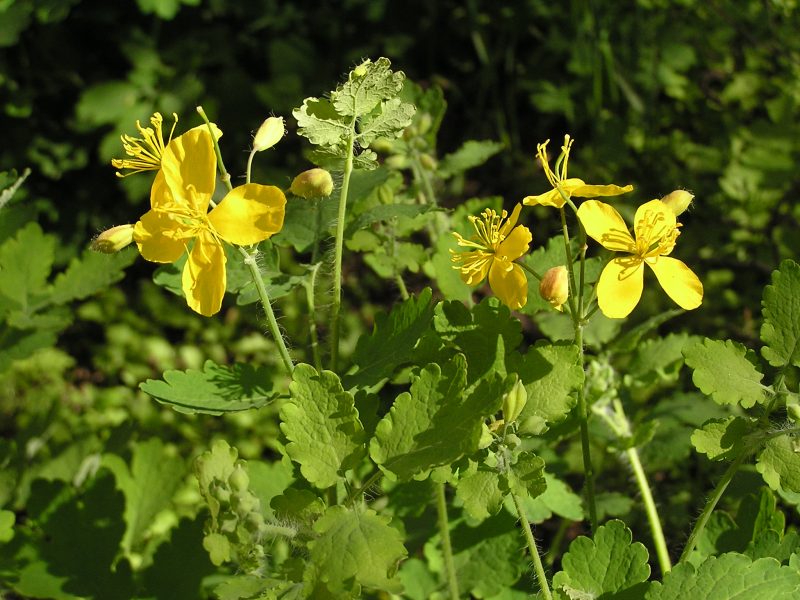
In case of violation of the duration of treatment and the amount of celandine, the following side effects are observed in patients:
- nausea and vomiting;
- defecation disorder;
- dilated pupils;
- increased anxiety;
- sleep disturbance;
- fast fatiguability;
- weakness.
With an overdose of means based on swallow grass, the following manifestations are noted:
- convulsive seizures;
- severe irritation of the mucous membranes;
- violation of the work of the heart muscle;
- signs of blood in the urine and feces;
- paralysis of the accommodation of the pupils of the eyes;
- deep sleep.
From the time of Paracelsus to the present day, interest in the medicinal properties of celandine has not faded. Modern research methods have made it possible to establish the composition and properties of the active substances of the plant and expand the scope of its application.






